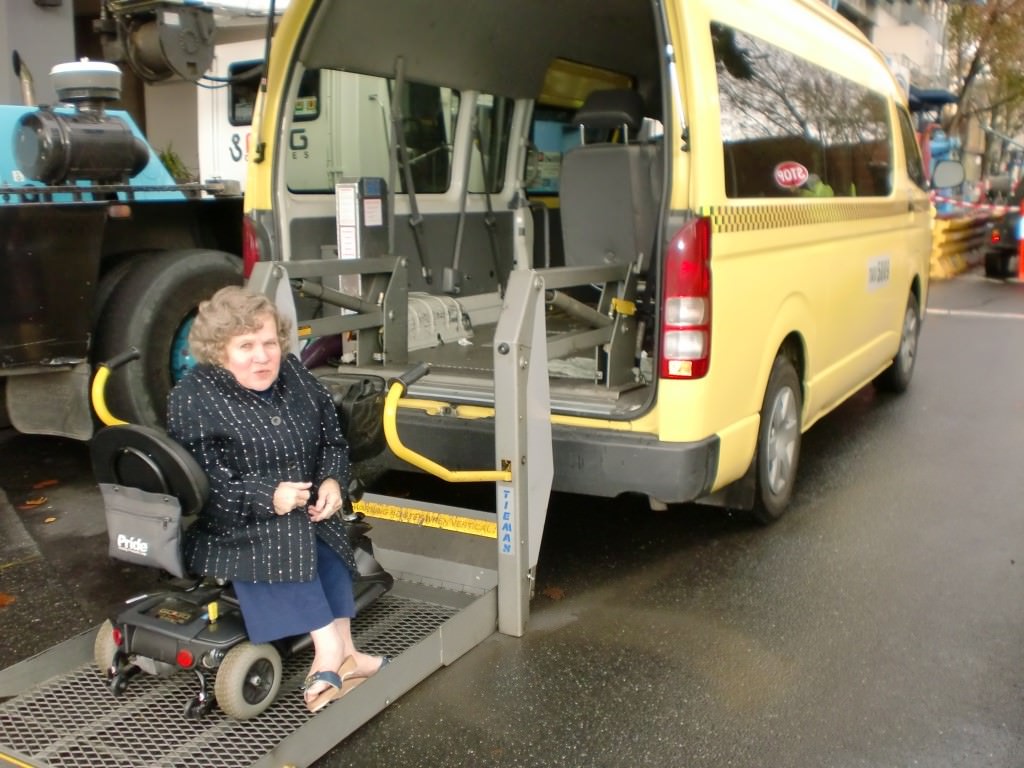
According to an attorney who defends businesses charged with Americans with Disabilities Act (ADA) Title III violations, most defendants don’t know there’s a problem until served with a summons notifying them of the lawsuit. So 31 years after the ADA’s January 26, 1992 effective date, we’re expected to believe defendants don’t know wheelchairs can’t climb steps, people using walkers and canes have trouble opening heavy doors, and little people can’t reach high counters!” Incredulous. No, it’s way past time for defendants to cry foul when held accountable for access violations that exclude people with dwarfism and disabilities.
Want to subscribe to receive blog updates sign up today!
Thankfully the United States Department of Justice (DOJ) ADA enforcement actions demonstrate ignorance is no excuse. For example, in 2017, the DOJ entered voluntary compliance agreements with two Iowa restaurants to resolve designated accessible parking space issues. At Cedar Grill, the spaces were not located on the shortest accessible route to the main entrance. At Birdsall Ice Cream Co., the stripes were worn and did not effectively define the van accessible parking space and adjacent access aisle.
Doors are another bone of contention for people whose disability limits their ability to push or pull. Heavy doors can effectively block people from entering a building or getting out of a public bathroom. For example, when my husband Robert did not return from using the bathroom at a COVID-19 testing site, I asked a paramedic on duty to go and check if he was okay. Sure enough he was trapped by a heavy door. Likewise, the closer on the Cedar Grill restaurant bathroom door at 7 lbs force was heavier than the maximum allowable force of 5 lbs.
It may surprise you to know that many people with dwarfism choose a restaurant based on furniture. As Deb Hecht, a little person from Indiana, said:
“Look at ALL the bar stools instead of regular dining room chairs. I am now very selective in my restaurant choices because of the height of the chair, not the food choice!”
Although food is important, it’s irrelevant if you can’t sit comfortably while eating it.
As it turns out, inaccessible seating is not something little people have to accept. The DOJ called out the two Iowa restaurants, named above, on this very issue. Both were required to remove architectural barriers—like fixed bar stools—that failed to provide accessible dining surfaces. At least five percent of the seating or standing spaces at dining surfaces must provide a dining surface 28 inches minimum and 34 inches maximum above the finished floor.
Counter heights can make the difference between being served or not. The accessible height is between 28 and 36 inches high. The 42 inch service counter where orders are taken and filled at Birdsall Ice Cream Co. caused the DOJ to require management to agree to transact business with disabled customers at the 30” high sales counter near the cash register when requested.
This is just a sampling of access issues the ADA addresses. What barriers are you ready to challenge?
You may also want to read:
- Angela Muir Van Etten. Take Action Against ADA Access Violations. January 24, 2022. https://angelamuirvanetten.com/take-action-against-ada-access-violations/
- Angela Muir Van Etten. “ADA Compliance Challenge Continues.” January 25, 2021. https://angelamuirvanetten.com/ada-compliance-challenge-continues/
- Disability Rights Cases (2021-2022). United States Department of Justice, Civil Rights Division. https://www.justice.gov/crt/disability-rights-cases.
- Angela Muir Van Etten. Breaking the Six-Inch Reach Barrier. June 28, 2021. https://angelamuirvanetten.com/contests-breaking-the-six-inch-reach-barrier/
- Americans with Disabilities Act (ADA) Accessibility Guidelines for Buildings and Facilities; Architectural Barriers Act (ABA) Accessibility Guidelines. July 23, 2004. https://www.federalregister.gov/documents/2004/07/23/04-16025/americans-with-disabilities-act-ada-accessibility-guidelines-for-buildings-and-facilities
- Angela Muir Van Etten. “Accessible” Public Bathroom Absurdities. November 16, 2020. https://angelamuirvanetten.com/accessible-public-bathroom-absurdities/
- Angela Muir Van Etten. Chapter 5, “At Your Physical Pleasure” in book one of my dwarfism trilogy, Dwarfs Don’t Live in Doll Houses. 1988 print & 2021 digital. Adaptive Living. https://angelamuirvanetten.com/dwarfs-dont-live-in-doll-houses/




